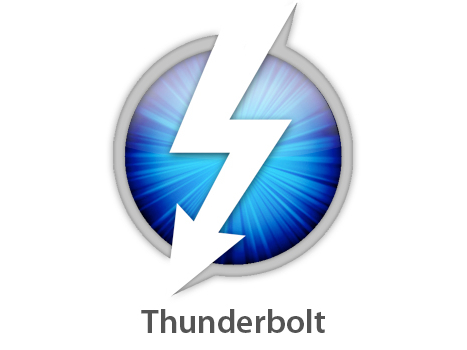AMD: Thunderbolt Another Proprietary Standard
AMD is apparently not impressed with Intel's Thunderbolt.
An unnamed AMD representative reportedly said that Intel's new Thunderbolt tech will become another proprietary standard that may not be widely adopted. The obvious reason is the current overall lack of devices that can take advantage of the extreme throughput.
But AMD also doubts that its rival's new tech will bring any tangible improvements to the industry, as it does not "substantially" outperform current generation I/O technologies and can even offer lower bandwidth in some cases.
"Existing standards offer remarkable connectivity and together far exceed the 10 Gb/s peak bandwidth of Thunderbolt," the AMD spokesman told X-Bit. "These solutions meet and exceed the bandwidth utilization of many peripherals."
The DisplayPort1.2 standard offers up to 17 Gb/s of peak bandwidth for displays. The total bandwidth for a Thunderbolt channel is only 20-percent higher than one PCI Express 3.0 lane and about 52-percent higher than a single USB 3.0 port. "AMD-based platforms support USB 3.0 which offers 4.8 Gb/s of peak bandwidth, AMD natively supports SATA 6Gb/s with our 8-series chipsets," the AMD official claimed.
AMD also pointed out that by employing Thunderbolt in the DisplayPort connector, available bandwidth for DisplayPort is decreased thus reducing the available bandwidth for various multi-display configurations. If anything, SSDs will actually be able to utilize 10 Gb/s of bandwidth once manufacturers like Western Digital and Seagate release drives with the Thunderbolt interconnector. External graphics processors would be the only other peripheral that would consume that kind of bandwidth over the PCI Express protocol.
"Consumers generally benefit by having standard, high-speed ports available on their mobile devices," the spokesperson said. "Proprietary ports, or the requirement of a dongle to employ those industry-standard ports may be an obstacle to consumers having the full computing experience at home or on the road."
Intel has previously indicated that Thunderbolt is currently aimed at professionals, not the mainstream consumer. The company also believes that the adoption rate will not be "considerably limited."
Get Tom's Hardware's best news and in-depth reviews, straight to your inbox.

Kevin Parrish has over a decade of experience as a writer, editor, and product tester. His work focused on computer hardware, networking equipment, smartphones, tablets, gaming consoles, and other internet-connected devices. His work has appeared in Tom's Hardware, Tom's Guide, Maximum PC, Digital Trends, Android Authority, How-To Geek, Lifewire, and others.
-
banthracis Completely agree, light peak had lots of potential.Reply
copper peak/thunderbolt...not so much.
Intel could have had a revolutionary product, instead, they went forward with a product that was a moderate evolution.
I don't buy Intel's whole fiber is too expensive argument. If you're aiming the product at enterprise yes those dollars add up. In the consumer industry? That extra $5 or $10 isn't gonna make a difference in a $1,000 PC. -
rhino13 Oh man, AMD doesn't like Intel's standard. This is news!Reply
As I recal they weren't big fans of AGP either.
It just generally stinksto have to liscence your competitor's technology. -
Snipergod87 I can see the issue with linking displays over light peak when using multiple displays.Reply
But as of now there is no other standard with that bandwidth that will support devices like external hard drives. Unless somebody comes out with a standard that can compete or beat light peak, this is all we have.
THe article seems to me tha AMD more trying to say our new 8-series chipset has SATA-III and USB 3.0 -
pozaks rhino13Oh man, AMD doesn't like Intel's standard. This is news!As I recal they weren't big fans of AGP either.It just generally stinksto have to liscence your competitor's technology.Like x86-64, right?Reply -
ElMoIsEviL AMD hedged its bets on Display Port 1.2. Their entire Radeon HD 69xx lineup take advantage of DP 1.2.Reply
No wonder they dislike the Intel Thunderbolt. -
southernshark Intel makes good processors for desktop computers. That's about it. The rest of their products are subpar.Reply
